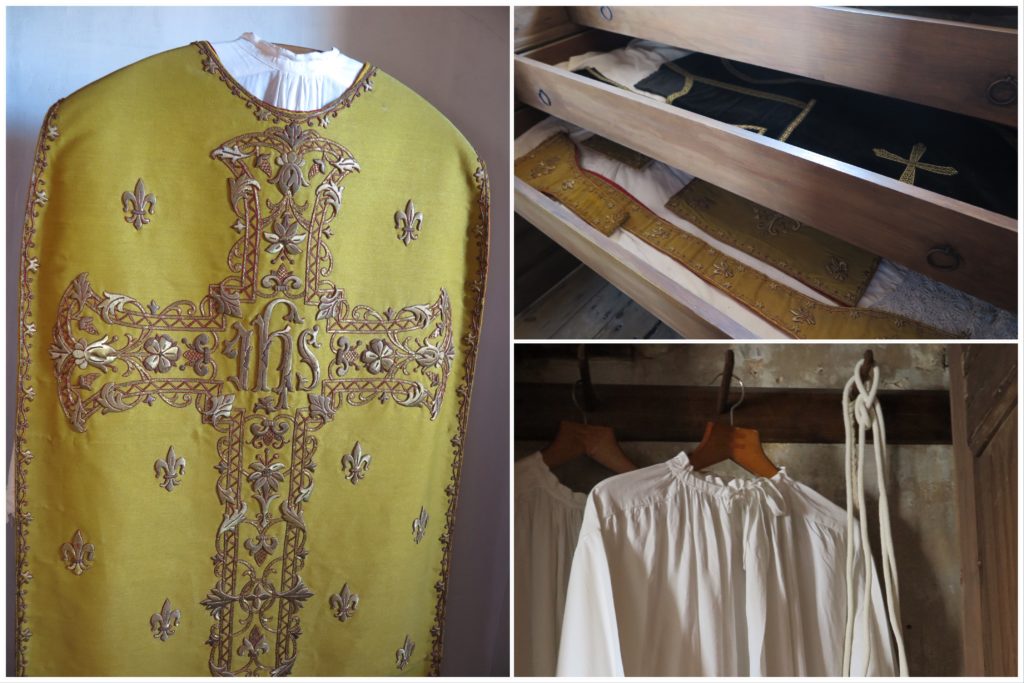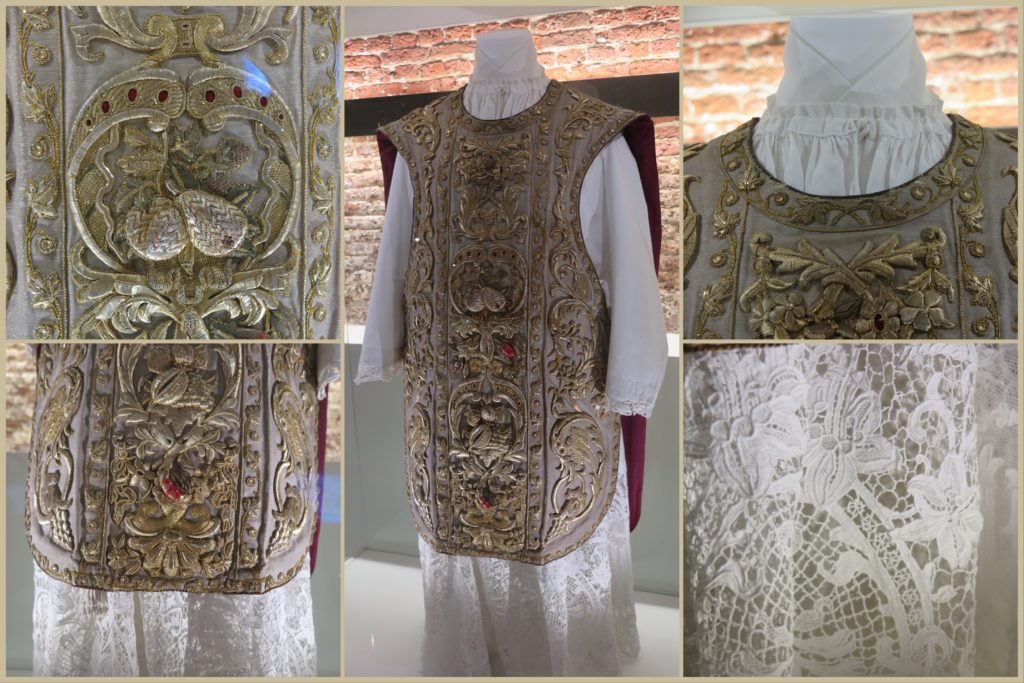I only had a day to explore Utrecht and Amsterdam. Besides my little yarn crawl (see previous post) I wanted to check out something touristy but also educational. A colleague recommended MUSEUM ONS’ LIEVE HEER OP SOLDER, a museum of a Catholic House Church. The top three levels of three combined canal houses was turned into a fully functioning church in the mid 17th century after Amsterdam became Protestant and the pubic Catholic churchs were confiscated.
I went expecting a little altar and a few benches, but it’s seriously a full on church! It includes confessional, sacristry, etc… One concession to the space constraints is the pulpit – it folds into the altar when not in use.
The whole place is fully of amazing craftmanship from the paintings, to the carved railings. Here are some craft highlights.
Throughout the living quarters below as well as in the church itself, you see what looks like marble (lower right), but is actually carefully painted wood! I loved that they left intact the small area that had been carefully chipped away to uncover past paint colors (right middle) in order to pick a color historic to the church in the mid 19th century (the pink/purple color is called “dead head”).
On a more textile note they have also recreated the woven rush mats that would have been used. These are hand made in the UK.

The sacristy (where the priest prepares for worship) was complete with historical vestments. The gold indicates these were for high holy days (think Christmas). I love that they were displayed mostly as they would have originally been stored.

The basement has a small museum of artifacts. These included additional vestments from the mid 19th century. I tried to get a few close ups of sections of the garment. You can see traces of red threads on some of the decorations.

I really enjoyed that so much of the tour touched on the craftmanship of the church and what went into the restoration we see today, in addition to the political and social history. The people who recreated the paint color and thought about using historically accurate rush mats to protect the floor (instead of say industrial carpet) put a lot of time and thought into it and deserve the recognition.
